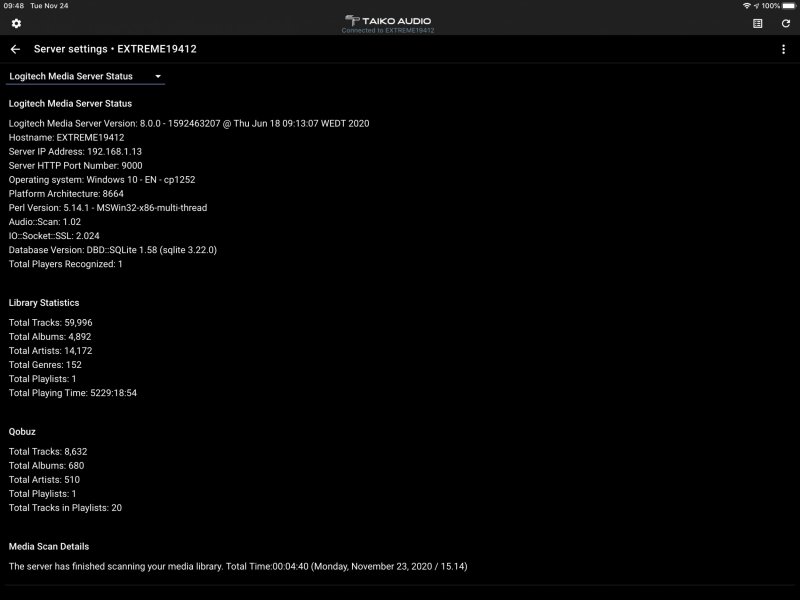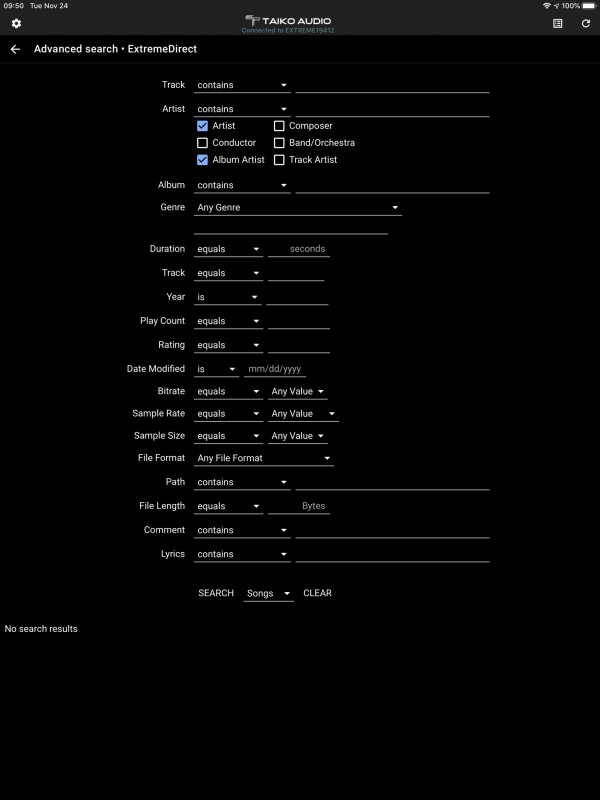Now on to TAS. Upon first opening TAS, I was asked to tap on my "preferred" Extreme. This made me feel quite inadequate as I only own 1 Extreme

.
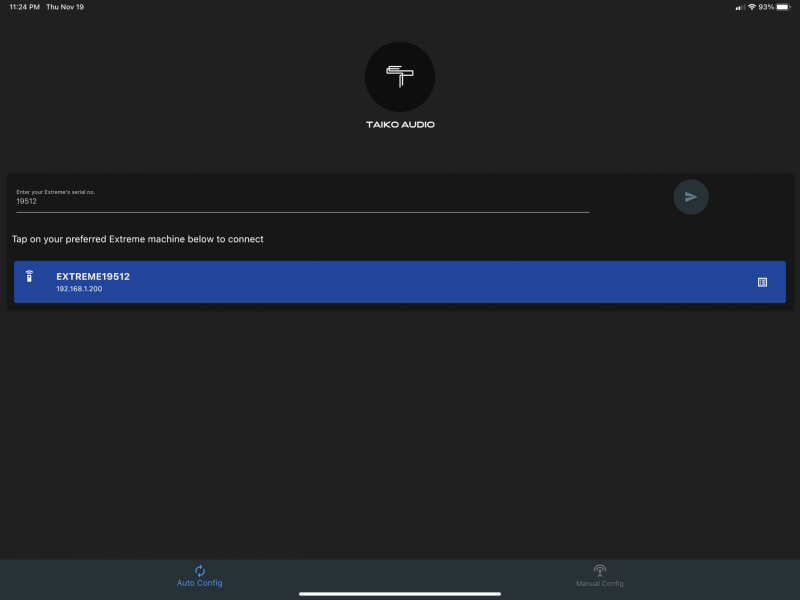
Kidding aside, I love the simplicity of TAS. Turn one server or player on and the other toggles off. The following screen is self-explanatory:
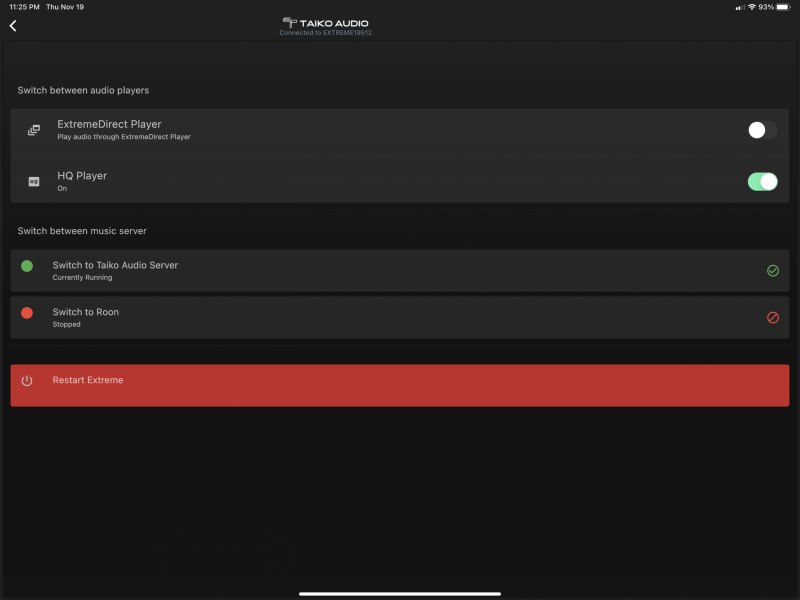
As Emile and group have suggested, with XD player, setting the buffer is key.
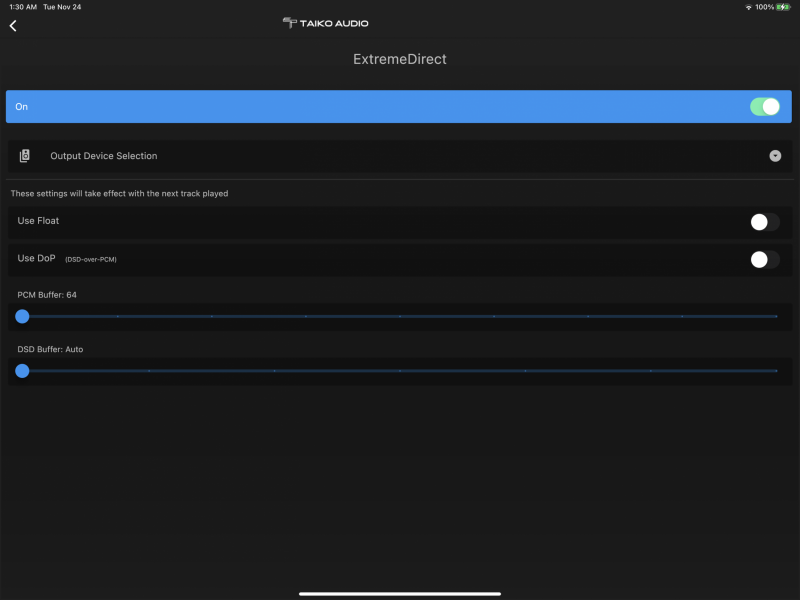
Buffer settings make a difference with HQP also but they make a much bigger difference with XD. With lower buffer settings, the signature is more incisive and is excellent for large orchestral music with complex lines. Reach too far and the signature can get too thin and dry. Increase the buffer setting and you get better density and a weightier sound that can also be more forgiving for vocals. Go too far and the signature can sound too heavy and smeared. There's no right or wrong, only personal preference. In Emile's system, if I recall correctly, he told me he likes a PCM buffer setting of 4096 for most things. In my system, I am preferring a buffer setting of 64 most of time and so this is on the opposite end of the spectrum. This low of a buffer setting is not a standard option and has to be set in the config file. Emile suspects my Chord DAVE and the modified Amanero driver that Chord uses is an outlier compared to other DACs and so this preference for near real-time (as opposed to heavily buffered) playback is probably more the exception than the rule, hence, it is not a standard option (not yet, at least). Moreover, the "Auto" buffer setting does not sound good in my system as it reminds me of Roon. "Adaptive-1" and "Adaptive-2" don't work at all. I can go as high as a PCM buffer setting of 2048. Beyond that, nothing plays but this is of no consequence as 2048 already sounds too thick and smeared with my DAC. I have not tried playing around with DSD buffers because truth be told, I am allergic to DSD (my head explodes). Also, float (versus integer) is not my preference. Regardless, the ability to adjust these variables is invaluable.
Regarding usability, TAS gets high marks already as far as I'm concerned. Once you get used to TAS, navigating its features is a joy. TAS is extremely responsive on my iPad Pro and the layout is simple and intuitive. Roon is more feature-rich and more refined at this stage but I have no doubt TAS will narrow the gap with time. Compared to HQP's interface, TAS is pure JOY!
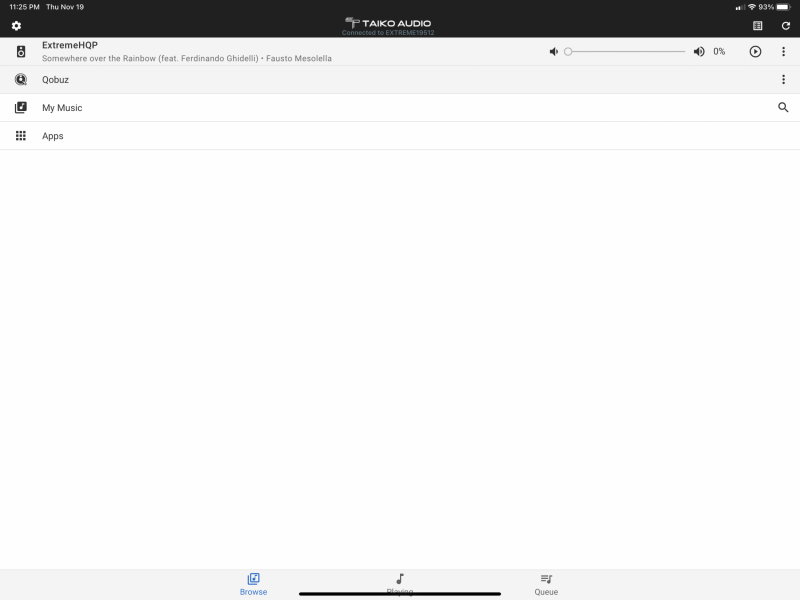
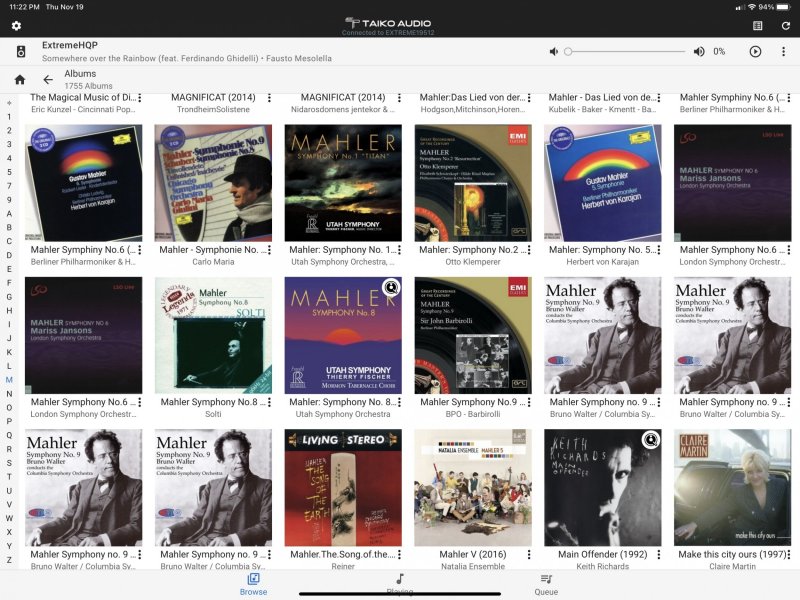
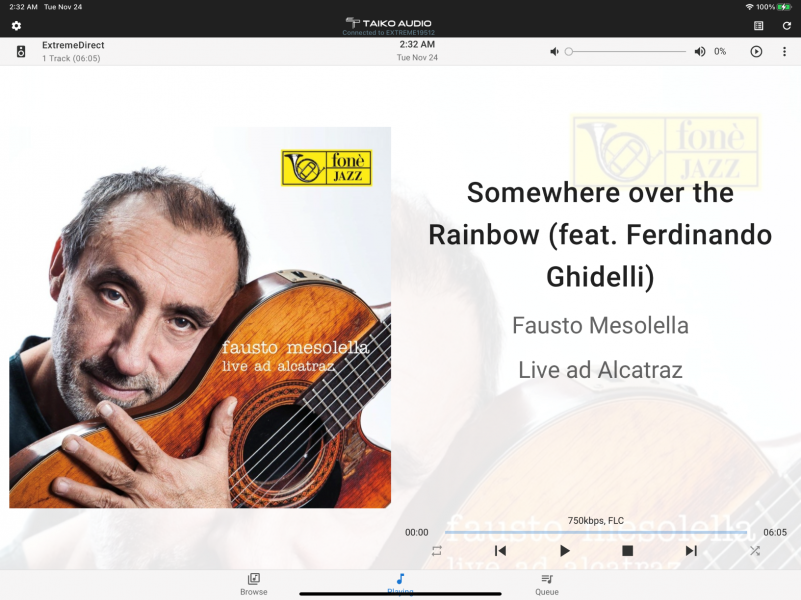
Could some things be better? Yes, of course. Here are a few personal suggestions. If you select an album within the "Albums" tab, you get the following screen:
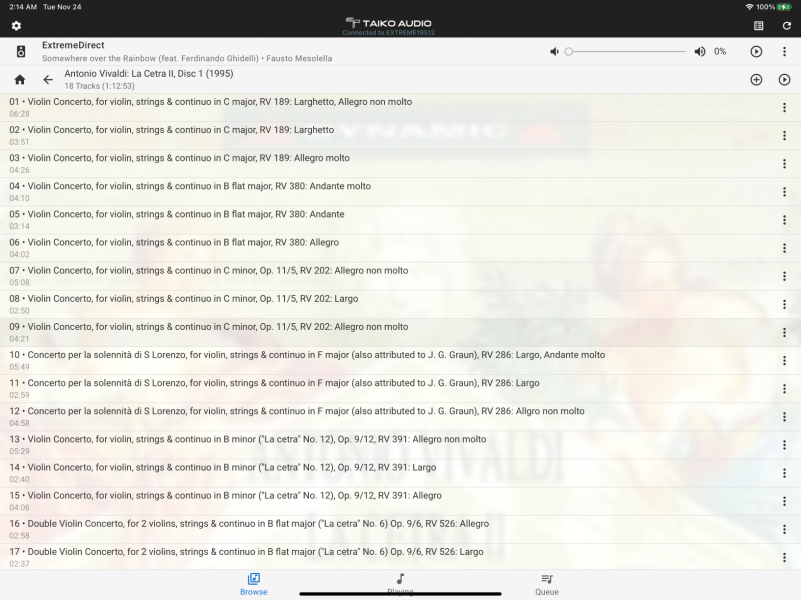
The above screen is how it should be. The track titles are very long but you are presented with the track titles in their entirety. However, if you select an album from the "Music Folder" tab, you get the following screen instead which is less helpful:
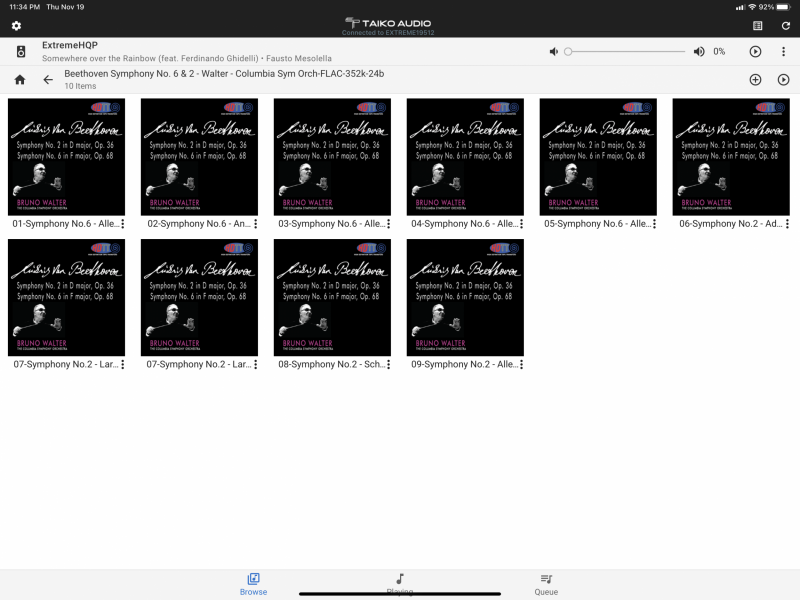
It's attractive but the titles of the tracks are truncated. It would be nice to be able to toggle to the list view like you get when you select an album from the "Albums" tab.
TAS also would benefit from a "Search" feature. Not like Roon's (which has improved but still not that great) but preferably like Spotify's which is almost Google-like in terms of speed and relevance. I would also love more sorting and filtering options (and Roon really excels here) but this is nitpicking since this is, after all, an alpha product and has been in development for months and not years. I'm sure these refinements will come with time.
As for SQ, I'm happy to find that either TAS + XD or TAS + HQP is better than Roon and so while expected, it is a relief to find out just how much better it is and that I can enjoyably listen to Qobuz again. As for Qobuz streaming versus local file playback, Emile and group have done well to narrow the gap which is a remarkable feat but my method of local file playback is unique and consequently, Qobuz streaming will never quite equal local file playback. The following is a screen capture of playback of one of my reference files through Qobuz. Notice the playback streaming bit rate of 750kb/s of this Redbook file at the bottom.
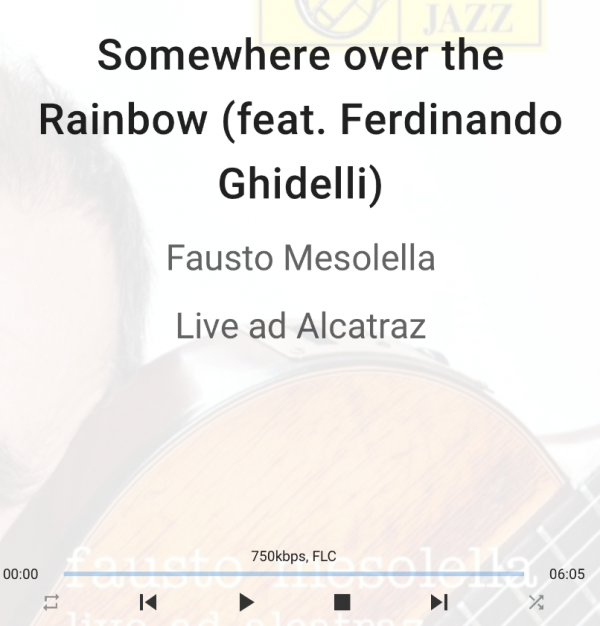
Here is playback of that same track on TAS from the Extreme's local storage but note the massively increased bit rate:
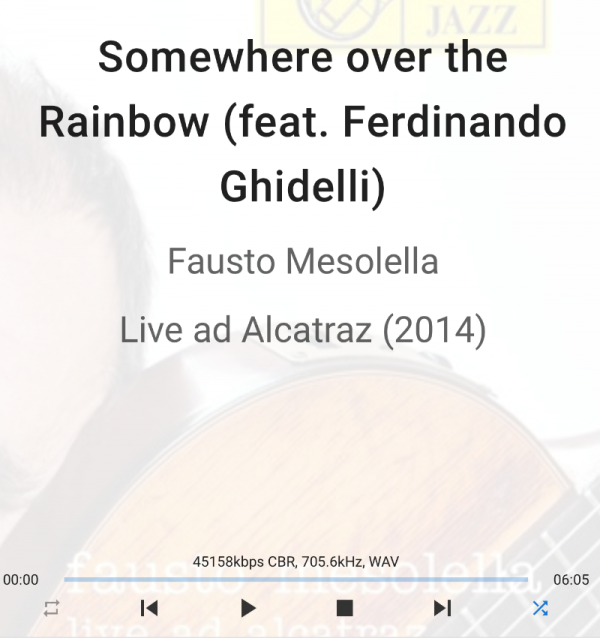
The gap in bit rates is like comparing hi-res to mp3 and it sounds like it, too. Obviously, this file has been manipulated but plays back bit-perfect on TAS and sounds simply STUNNING on the Chord DAVE. This has absolutely nothing to do with HQP btw and unfortunately, seems to benefit mainly Chord DACs. If you have a Chord DAVE and an Extreme, feel free to PM me and I can share with you a file that you can listen to on TAS with your Extreme and your DAVE. This is just crazy good. If you have a Chord DAVE and don't have an Extreme, you really need to get an Extreme.
Regarding TAS + XD versus TAS + HQP/NAA, at this time, with my DAC, TAS + HQP/NAA is sounding better. In comparison, XD is sounding closed in but I believe Emile has already figured out why and so I am confident XD will improve and possibly leapfrog HQP/NAA. Again, this is likely a DAC-specific issue. Without getting into it too much, your DAC quite possibly already sounds better with XD but to be sure, you should try for yourself as TAS is operating smoothly with both players.
Regarding TAS + HQP/NAA versus HQP/NAA standalone, I am finding that TAS + HQP/NAA to sound superior although for now, TAS + HQP/NAA is not gapless. What stands out is that the user experience with TAS is so much better than HQP standalone and so I am happy to live with the gaps.
Imho, TAS either with XD or HQP is a landmark product already. While I was quite upset with the Roon 528 update, in hindsight, it turned out to be the best thing that could have happened. What was probably meant to be an expeditious "fill in" for Roon (at least that was my initial modest expectation) instead turned out to be a remarkable product that brilliantly leverages almost every ounce of the Extreme's hardware and will undoubtedly only become more refined with time. Despite being an alpha product, its future potential is clear especially when combined with Taiko's upcoming ASIO driver and USB card.
i was totally involved just listening so was fully aware. i was not bothered by it really. less time would be good, but could live with this if it did not change.










